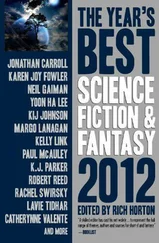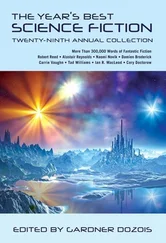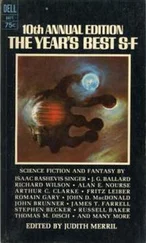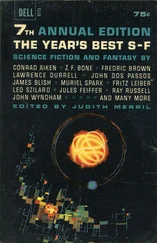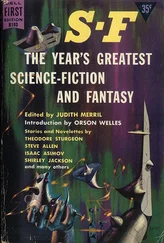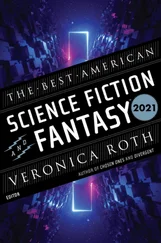Judith Merril - The Year's Greatest Science Fiction & Fantasy 6
Здесь есть возможность читать онлайн «Judith Merril - The Year's Greatest Science Fiction & Fantasy 6» весь текст электронной книги совершенно бесплатно (целиком полную версию без сокращений). В некоторых случаях можно слушать аудио, скачать через торрент в формате fb2 и присутствует краткое содержание. Год выпуска: 1962, Издательство: Dell, Жанр: Фантастика и фэнтези, на английском языке. Описание произведения, (предисловие) а так же отзывы посетителей доступны на портале библиотеки ЛибКат.
- Название:The Year's Greatest Science Fiction & Fantasy 6
- Автор:
- Издательство:Dell
- Жанр:
- Год:1962
- ISBN:нет данных
- Рейтинг книги:3 / 5. Голосов: 1
-
Избранное:Добавить в избранное
- Отзывы:
-
Ваша оценка:
- 60
- 1
- 2
- 3
- 4
- 5
The Year's Greatest Science Fiction & Fantasy 6: краткое содержание, описание и аннотация
Предлагаем к чтению аннотацию, описание, краткое содержание или предисловие (зависит от того, что написал сам автор книги «The Year's Greatest Science Fiction & Fantasy 6»). Если вы не нашли необходимую информацию о книге — напишите в комментариях, мы постараемся отыскать её.
The Year's Greatest Science Fiction & Fantasy 6 — читать онлайн бесплатно полную книгу (весь текст) целиком
Ниже представлен текст книги, разбитый по страницам. Система сохранения места последней прочитанной страницы, позволяет с удобством читать онлайн бесплатно книгу «The Year's Greatest Science Fiction & Fantasy 6», без необходимости каждый раз заново искать на чём Вы остановились. Поставьте закладку, и сможете в любой момент перейти на страницу, на которой закончили чтение.
Интервал:
Закладка:
Ex-rocketman Stine is now working for a research and development company in New York City, where he is closely associated with Col. William O. Davis, former chief of the USAF Office of Scientific Research. (Stine’s “Time for Tom Swift,” in Analog, January, 1961, some of Davis’s ideas on space flight, based on the notion that any practical system of transport must be “suitable for an aged grandmother visiting her grandchildren. . . .”) The article that follows is excerpted from a longer essay, “Science Fiction Is Too Conservative.”
My full-time legitimate business involves the promotion of scientific innovation, management of scientific research, and synthesis. I don’t run a laboratory; I sit with a pencil and paper, I read constantly, and I travel to find out what Dr. Knowsall happens to be doing in a remote corner of his lab. In order to find out what is likely to be significant to my company in the future, I must identify a new area of science or technology early ... preferably before it becomes a real new area and before everyone else knows about it, too. If a new area makes sense in a number of ways, and if everybody else thinks that you are stark raving mad to consider it, it is exactly what the doctor ordered. It’s not an easy job; just when you think you have things well under control, the program planned nicely, and the future well in hand, through the door walks someone with something new. And you have to start all over again.
Old training as an s-f writer taught me the value of future trend curves. In order to write a story about the future, one had to have some notion of what the future held in store and in what approximate time period it was likely to take place. This sort of crystal ball gazing is quite useful in research management, particularly when you must sell a screwball concept to management.
Trend curves were probably first considered as a serious aid to research management by the Air Force Office of Scientific Research in 1953. A trend curve is a simple thing to plot. It isn’t hard to construct one. It is difficult to do the necessary research to begin with and to interpret the results when you are finished. For a better understanding of this matter of trend extrapolation, let us consider one of the simplest and most obvious of trend curves: speed.
If we plot the time in years on the abcissa while plotting the speed achieved by manned devices (and/or unmanned devices, too) on the ordinate, we get the simplest and purest sort of trend curve. In 30,000 B.C., a man could make 4 mph walking and about 10 mph running. Plot the point. In about 2000 B.C., he rides a horse at about 30 mph maximum; another point. Get the idea? Then come ships, starting at zero mph for simple rafts in umpteen-hundred B.C. and progressing to about 40 mph in 1800. Then comes the train, starting with the 10 mph of Stevenson’s locomotive in 1830 and rising to the 128 mph achieved by the Pennsylvania Special in 1905.
There is already something of interest that the trend curve can tell us at this point: each time a new concept of transportation showed up, the speed curve for that device rose sharply and finally leveled off as the practical limit for that device was reached. But, at the same time, each new quantum jump in speed was produced by a new device based on a new concept. This, then, gives the integrated curve a continually increasing slope.
Back to our buttons: The airplane shows up in 1903 flying at a graceful 30 mph. From that point on, speed begins to increase with great rapidity: 200 mph in the 1920’s, 500 mph in the late 1930’s, Mach 1 in 1947; Mach 2 in 1952. But there the speed of the airplane begins to flatten out. But along comes the ballistic vehicle!
At this point, the curves for unmanned and manned vehicles begins to split. At this time, unmanned vehicles have not only achieved orbital velocity, but escape velocity as well. Manned vehicles should achieve orbital velocity in 1961. Shortly thereafter, much sooner than anyone believes possible, manned vehicles will achieve escape velocity.
The speed trend curve was drawn up by members of the Air Force Office of Scientific Research in 1953 to convince people that space flight was indeed becoming a reality and that the Air Force should get moving. With this curve, USAF officers were able to predict, in 1953, that orbital velocity would be achieved late in 1957 and escape velocity shortly thereafter. Obviously, they were crazy... or were they?
Now having a typical trend curve to play with, let’s analyze it. Note the shape of the curve. By using linear scales on both the speed and time axis, the curve would appear to be practically flat until a few years ago; and the curve would appear to be exponential. Okay, this means we must transfer it to semi-log paper, graph paper with a linear time scale but a logarithmic speed scale; on this type of graph paper, a true exponential function becomes a straight line. But a trend curve on semi-log paper is still an upward-turning exponential! So we must therefore transfer it to a curve with a log scale on speed and a reverse-log scale for time. Even at that, the trend curve still turns upward in an exponential fashion!
What does this mean? Just that things are happening much faster than we believe. Most laymen are content to predict the future in terms of a trend curve that levels off from the present ever onward. Scientists, on the other hand, are a bit more radical; they tend to predict the future trend with a curve of constant slope from now on.
A layman can’t really predict the future at all; he has no understanding of the forces that are in motion because of accumulated knowledge. Scientists will grudgingly try to predict the future using an extremely conservative estimate —one that has always been wrong. Using a linear trend curve, scientists in 1930 were predicting a controlled nuclear reaction not before 2,000 a.d. Obviously too conservative, because a controlled nuclear reaction was achieved ten years later.
Science-fiction writers, myself included, were using a straight exponential trend curve, also a conservative one, and predicted generally that space flight might be achieved around 1975, and that we might land on the Moon or travel to Mars around the turn of the century.
If you really understand trend curves, you can extrapolate them into the future and discover some baffling things. The speed trend curve alone predicts that manned vehicles will be able to achieve near-infinite speeds by 1982, and I would not want to bet that I have not been too conservative in extrapolating the curve! It may be sooner. But the curve becomes asymptotic by 1982.
The trouble with a trend curve is that it may tell you quite accurately what to expect, but it doesn’t tell you how it is going to happen. I have no idea how we are going to achieve near-infinite speed (or near-infinite acceleration). The curve simply goes asymptotic.
If this is really the case, a true scientific breakthrough of major importance must be in the offing in the next twenty years. The breakthrough itself will probably be within the next few years. It takes time to go from theory and experimental hardware to practical engineering devices, although the trend curves show that this time cycle is getting shorter all the time, too. We can’t know how long the development cycle will be because we have no idea what the concept or theory entails at this time. But, with cybernetic computers, improved management techniques, and the benefit of centuries of accumulated knowledge and technique, you can bet that the development cycle will be much shorter than it was for the airplane or even the ballistic missile.
What does this mean to us as human beings and, especially, to science-fiction editors, writers, readers, and fans? Answer: plenty of entertaining speculation.
Читать дальшеИнтервал:
Закладка:
Похожие книги на «The Year's Greatest Science Fiction & Fantasy 6»
Представляем Вашему вниманию похожие книги на «The Year's Greatest Science Fiction & Fantasy 6» списком для выбора. Мы отобрали схожую по названию и смыслу литературу в надежде предоставить читателям больше вариантов отыскать новые, интересные, ещё непрочитанные произведения.
Обсуждение, отзывы о книге «The Year's Greatest Science Fiction & Fantasy 6» и просто собственные мнения читателей. Оставьте ваши комментарии, напишите, что Вы думаете о произведении, его смысле или главных героях. Укажите что конкретно понравилось, а что нет, и почему Вы так считаете.


